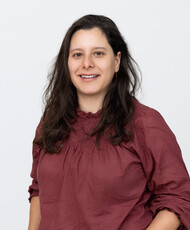
Extending information theory to the quantum domain has brought forth a fruitful field, where the quantum nature of the information carriers is exploited in genuine quantum tasks. Entanglement is a paradigmatic quantum feature that enables correlations that would be inconceivable in classical systems and is at the heart of numerous information processing- and communication protocols.
Many such protocols require the experimental verification of the presence of entanglement, or potentially even quantifying the amount of this non-classical resource. This is a notoriously hard task, in parts also because the phase space of composite quantum systems is too large to be characterized completely. While in low dimensions we have a good handle on many such questions, our group is working on mathematical methods for verifying and quantifying entanglement in high dimensional and multipartite systems.
There are a number of challenges to be addressed in this context. First of all, especially in the context of secure quantum communication and fundamental tests of nature, it is desirable to detect entanglement with various degrees of trust in the devices (see page Quantum cryptography). This is nowadays usually referred to as device independent entanglement verification, where we focus on asymmetric scenarios, often referred to as quantum steering [1,2]. Another aspect of quantum steering that interests us is the problem of determining the steerability of quantum states subjected to a finite number of local measurements. Under such restrictions, we wish to determine which set is the one that reveals highest steerability of a quantum state, according to some steering quantifier that is more relevant to the task one wishes to perform. To approach this problem, we have developed and applied a variety of methods that are based on semidefinite programming. Ultimately, these methods are tools to study the relevance of general measurements compared to projective measurements in revealing entanglement semi-device independently.
We furthermore try to quantify entanglement using only limited and experimentally readily available information [3]. For the aforementioned experimental verification of entanglement, we need to find convenient ways to represent correlations. The correlation tensor based approach is sequential, allowing to certify entanglement with only partial information about the density matrix, thus saving measurement effort [4]. Additionally, it allows for reference frame independent entanglement verification, thereby reducing alignment effort during set-up, as well as ignoring rotational noise [5].
Secondly, we aim to get a deeper understanding of entanglement, therefore we need to understand the properties of high-dimensional Hilbert spaces. In collaboration with groups in Spain we work on higher dimensional entanglement monotones [6], monogamy of quantum entanglement [7], the mathematical structure of channels that break entanglement [8] and the characterization of multipartite entanglement in terms of positive maps [9].
Probably as important is the question of how to best represent the state space of a multipartite qudit system. To conveniently represent general qudit systems and correlations between them we work on a modern and general approach towards the Bloch representation of the qubit by Pauli Matrices. We work on different generalizations to higher dimensions and infinite dimensional systems [10].
Most recent work:
M. Huber, L. Lami, C. Lancien and A. Müller-Hermes. High-dimensional entanglement in states with positive partial transposition. Physical review letters 121, 200503 (2018).
Bibliography:
[1] T. Moroder, O. Gittsovich, M. Huber, O. Gühne, Steering bound entangled states: A counterexample to the stronger Peres conjecture, Phys. Rev. Lett. 113, 050404 (2014)
[2] T. Moroder, O. Gittsovich, M. Huber, R. Uola, O. Gühne, Steering maps and their application to dimension-bounded steering, Phys. Rev. Lett. 116, 090403 (2016)
[3] P. Erker, M. Krenn, M. Huber, Quantifying high dimensional entanglement with cameras and lenses, Quantifying high dimensional entanglement with two mutually unbiased bases, Quantum 1, 22 (2017)
[4] J. I. de Vicente, M. Huber, Multipartite entanglement detection from correlation tensors, Phys. Rev. A 84, 062306 (2011)
[5] C. Klöckl, M. Huber, Characterizing multipartite entanglement without shared reference frames, Phys. Rev. A 91, 042339 (2015)
[6] G. Sentís, C. Eltschka, O. Gühne, M. Huber, J. Siewert Quantifying entanglement of maximal dimension in bipartite mixed states, Phys. Rev. Lett. 117, 190502 (2016)
[7] C. Lancien, S. Di Martino, M. Huber, M. Piani, G. Adesso, A. Winter, Should Entanglement Measures be Monogamous or Faithful?, Phys. Rev. Lett. 117, 060501 (2016)
[8] L. Lami and M. Huber, Bipartite depolarizing maps, J. Math. Phys. 57, 092201 (2016)
[9] F. Clivaz, M. Huber, L. Lami, G. Murta, Genuine-multipartite entanglement criteria based on positive maps, J. Math. Phys. 58, 082201 (2017)
[10] Ali Asadian, Paul Erker, Marcus Huber, Claude Klöckl, Heisenberg-Weyl Observables: Bloch vectors in phase space, Phys. Rev. A 94, 010301(R) (2016)





